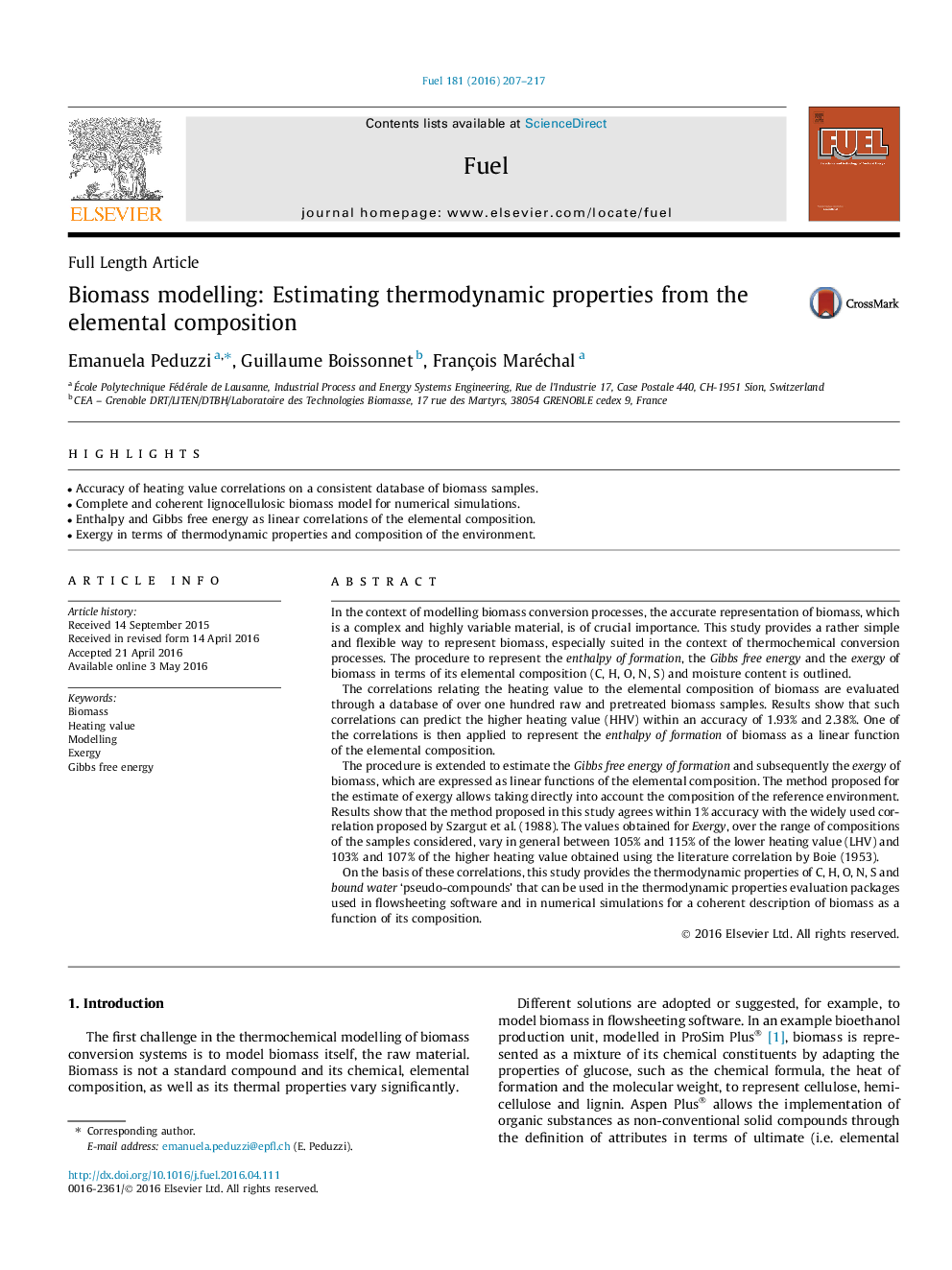| کد مقاله | کد نشریه | سال انتشار | مقاله انگلیسی | نسخه تمام متن |
|---|---|---|---|---|
| 204910 | 461093 | 2016 | 11 صفحه PDF | دانلود رایگان |
• Accuracy of heating value correlations on a consistent database of biomass samples.
• Complete and coherent lignocellulosic biomass model for numerical simulations.
• Enthalpy and Gibbs free energy as linear correlations of the elemental composition.
• Exergy in terms of thermodynamic properties and composition of the environment.
In the context of modelling biomass conversion processes, the accurate representation of biomass, which is a complex and highly variable material, is of crucial importance. This study provides a rather simple and flexible way to represent biomass, especially suited in the context of thermochemical conversion processes. The procedure to represent the enthalpy of formation, the Gibbs free energy and the exergy of biomass in terms of its elemental composition (C, H, O, N, S) and moisture content is outlined.The correlations relating the heating value to the elemental composition of biomass are evaluated through a database of over one hundred raw and pretreated biomass samples. Results show that such correlations can predict the higher heating value (HHV) within an accuracy of 1.93% and 2.38%. One of the correlations is then applied to represent the enthalpy of formation of biomass as a linear function of the elemental composition.The procedure is extended to estimate the Gibbs free energy of formation and subsequently the exergy of biomass, which are expressed as linear functions of the elemental composition. The method proposed for the estimate of exergy allows taking directly into account the composition of the reference environment. Results show that the method proposed in this study agrees within 1% accuracy with the widely used correlation proposed by Szargut et al. (1988). The values obtained for Exergy, over the range of compositions of the samples considered, vary in general between 105% and 115% of the lower heating value (LHV) and 103% and 107% of the higher heating value obtained using the literature correlation by Boie (1953).On the basis of these correlations, this study provides the thermodynamic properties of C, H, O, N, S and bound water ‘pseudo-compounds’ that can be used in the thermodynamic properties evaluation packages used in flowsheeting software and in numerical simulations for a coherent description of biomass as a function of its composition.
Journal: Fuel - Volume 181, 1 October 2016, Pages 207–217
